… As my veggie-loving pug will tell you!
And I’m talking the broad outer leaves that surround a head of broccoli, not the few tiny and uninspiring leaves stuck to the head of store-bought broccoli.
Most people don’t realize that you can eat broccoli leaves, or that they’re just as edible and delicious as the broccoli head itself. And I can’t blame them, considering broccoli always comes in a neat little package at the grocery store or farmers’ market.
It’s a surprise to many people that the broccoli we buy and eat is actually a very small portion of the plant itself. So where does the rest of it go?
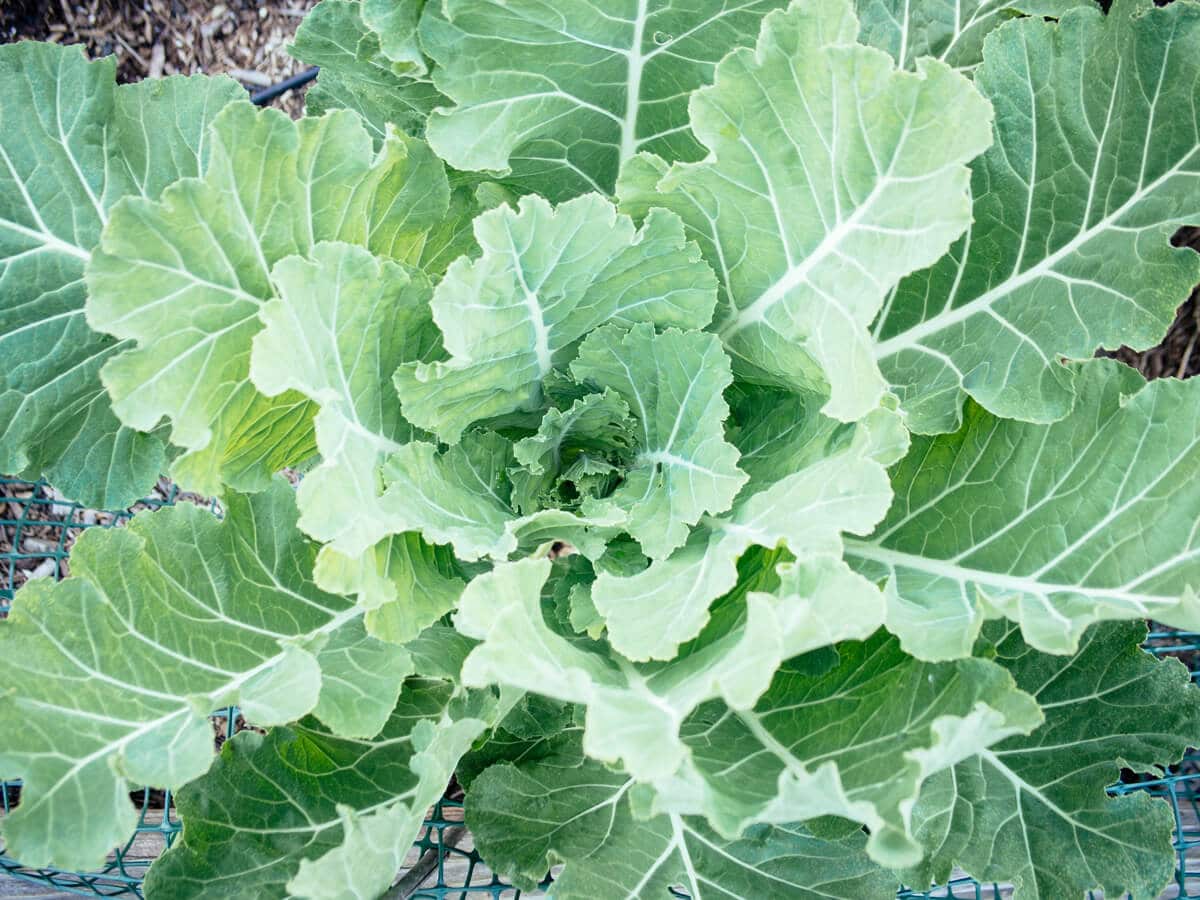
The growth habit of broccoli plants
Unless you grow them yourself, you never see the massive greens that broccoli heads spring from.
On my Romanesco broccoli plant (Brassica oleracea ‘Romanesco’), which grows larger than your everyday broccoli, the mature leaves span up to 2 feet long with hefty ribs and stems.
Even though the plant is typically grown for its flower bud (what you commonly know as a head of broccoli, or a floret or crown), the flower is a relatively small part of the crop, and it seems like you wait alllll spring (or fall) for the prize.
(A prize that sometimes never arrives, as anyone who has waited fruitlessly for a bud can attest to! But that’s a different post on the ails of growing broccoli at home.)
A broccoli plant only produces one significant head per life cycle, with occasional secondary sprouts that form in the axils of the leaves.
These side shoots always turn out smaller than the center head (think bite-sized), which is where baby broccoli comes from. This specialty vegetable that you sometimes see at farmers’ markets or gourmet grocers is simply a bonus harvest — not broccoli picked early.
Knowing all that, it seems wasteful to use such a modest portion of the plant when the rest of it is so good.
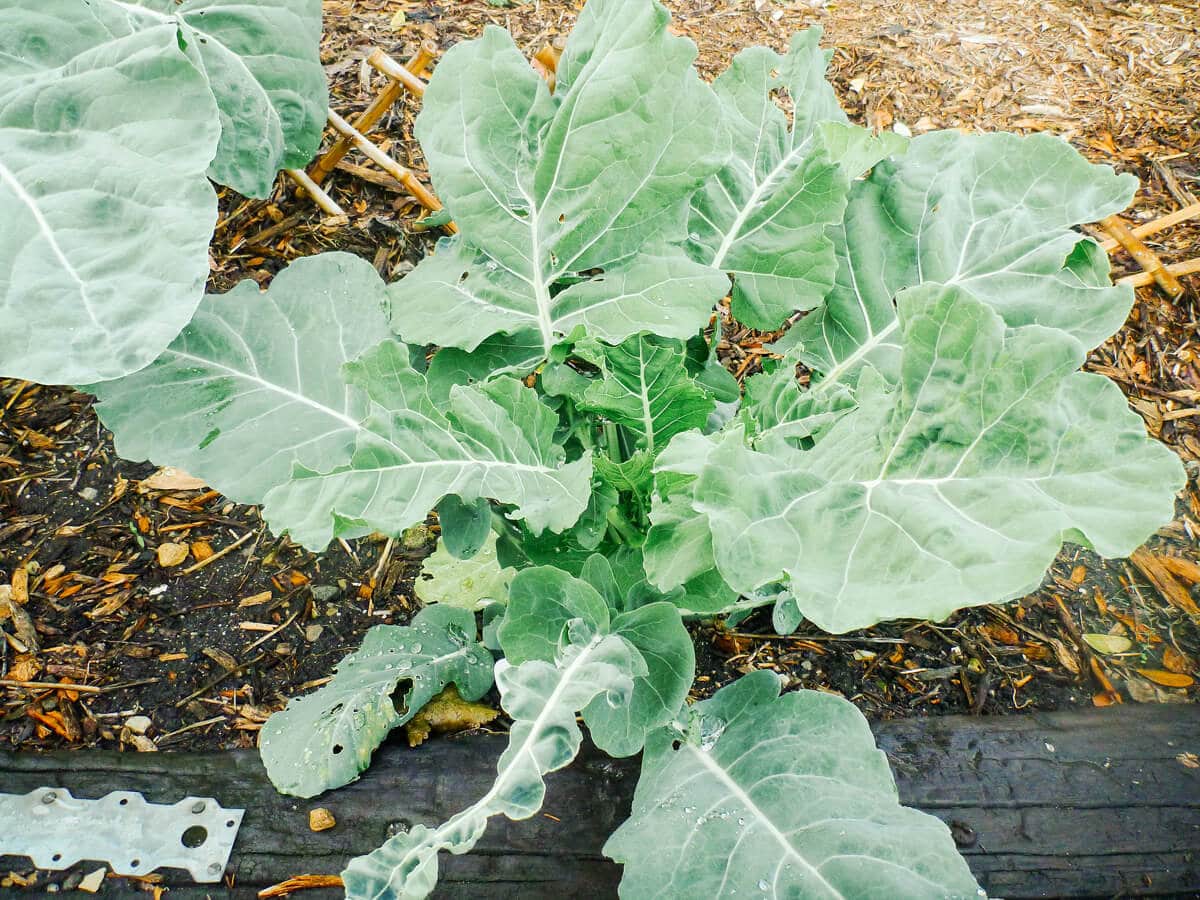
Health benefits of broccoli and broccoli leaves
Broccoli is considered one of the most nutritious vegetables on the market, providing 100 percent of the daily value of vitamin C in a single cup of chopped broccoli.
It contains a full nutritional lineup of B vitamins, potassium, iron, calcium, minerals, and fiber.
When compared to the stems, the florets have a higher concentration of protective phytochemicals like beta carotene and sulforaphane (the latter of which has been shown to protect against certain cancers).
But broccoli leaves are their own superfood, with even higher amounts of beta carotene than the florets, along with vitamin A (which is important for vision and skin health) and phytonutrients that aren’t found in the florets or stems.
That means if you’re a gardener who’s used to composting broccoli leaves or ignoring them while you wait for the heads to form, you are missing out on the many free health benefits of this amazing crop.
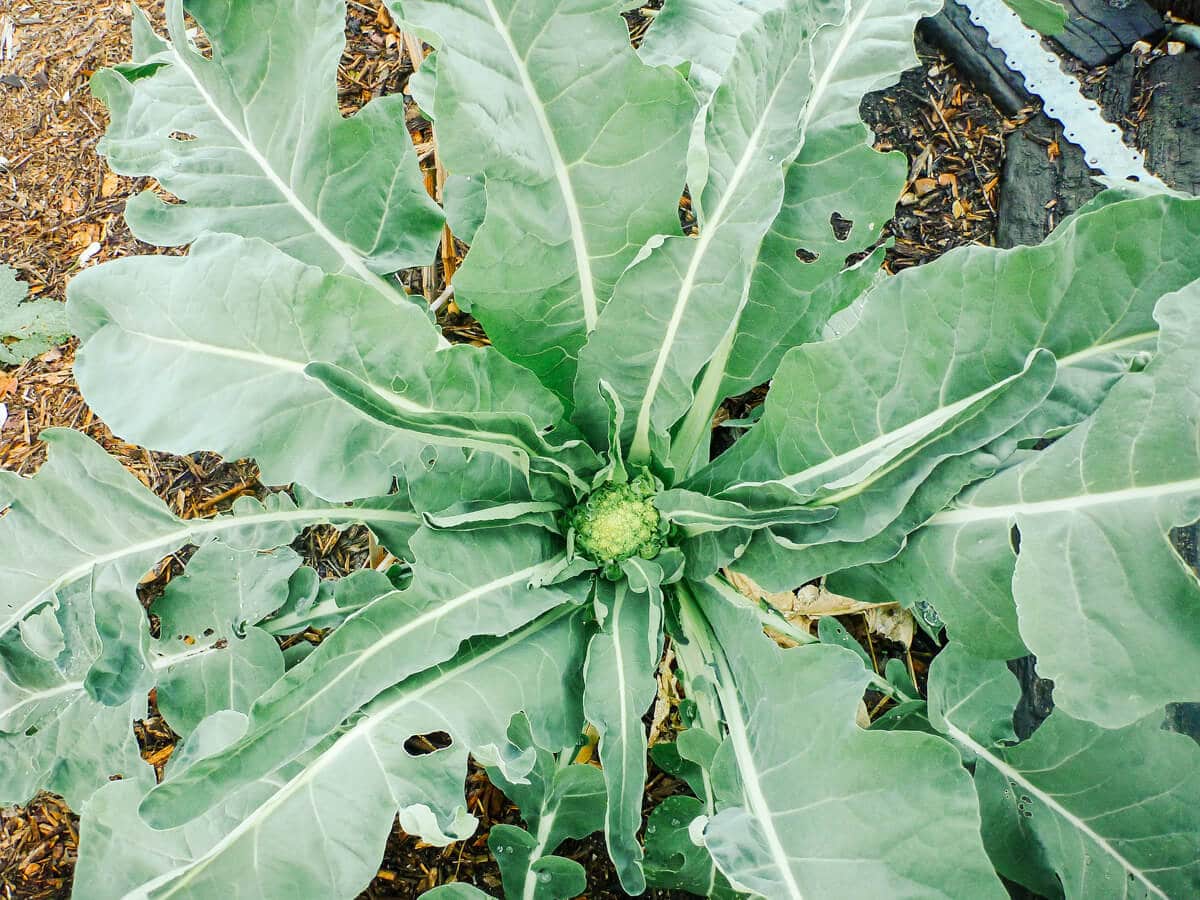
How to harvest broccoli leaves
If you grow your own broccoli, you can start to harvest a few of the outer (older) leaves every week once they reach 4 to 6 inches long.
After the plant forms a crown, you can harvest the broccoli head but continue to pick the leaves until you can no longer keep up… seriously!
Broccoli is an incredible cut-and-come-again crop, and new leaves remain tender even when the rest of the plant is getting tall and unwieldy.
When I lived in Southern California, I could keep my broccoli growing year-round in the mild coastal climate (zone 10b).
These second-year plants were still thriving despite having all the crowns harvested moons ago, and on some of the plants, I’d stripped them clean of leaves to cook with!

(It’s hard to tell without a frame of reference, but the tallest broccoli plant in the back had grown almost 5 feet tall!)
Let’s just say… we got our fill and didn’t grow anymore broccoli the following year.
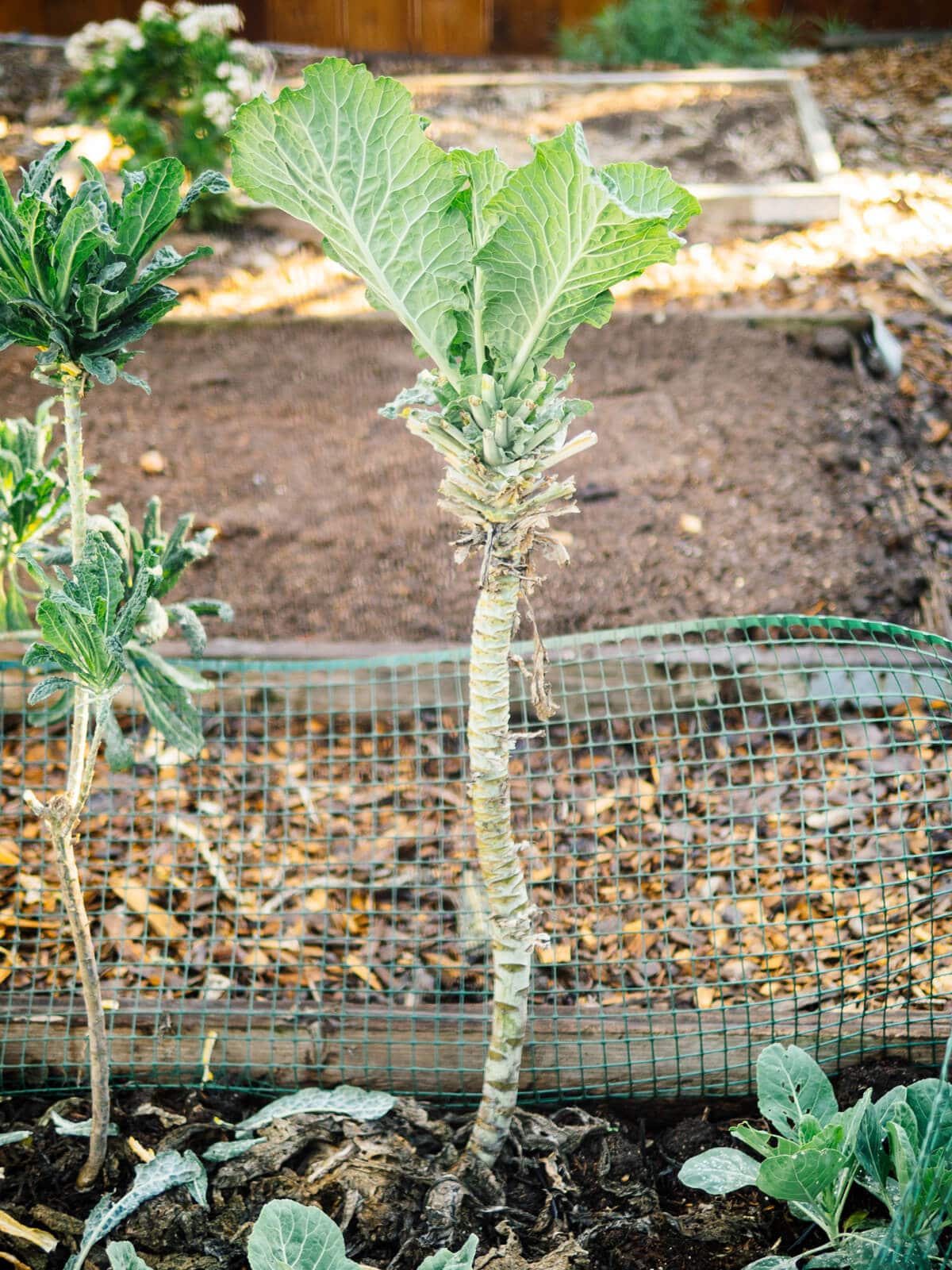
How to use and cook broccoli greens
Texture- and appearance-wise, broccoli greens are similar to collard greens, as both plants belong to the mustard (Brassicaceae) family.
The large leaves may look intimidating, but they’re easy to harvest and work with in the kitchen. You can eat broccoli leaves raw or you can cook them a number of ways; heat makes them sweeter.
If you pick younger broccoli leaves off the plant, they’re tender enough to toss raw into a salad or stuff into a sandwich.
Medium leaves are the perfect size and thickness to fill with veggies and meat, à la cabbage rolls. I also like to wrap them around a chicken salad or tuna salad (instead of using tortillas or pitas)
Look for my recipe for broccoli green and baked falafel wraps in The No-Waste Vegetable Cookbook, which helps you waste less and eat better with vegetables you already grow or buy.
Large leaves work best in braises, soups, and stews, where they’ll stand up to a long simmer and soak up loads of rich flavor. They can even take a quick sear on the grill (try misting them with a little oil and seasoning with salt and pepper).
You can make broccoli leaf chips the same way you make kale chips. If you’re a fan of green smoothies, you can even juice broccoli leaves.
Broccoli greens can be used in place of collards, kale, cabbage, or chard in many recipes, though they have their own distinct flavor. The leaves taste earthy, mildly bitter, and faintly of broccoli (which means people who are usually not fond of broccoli may take a liking to the leaves).
I typically don’t eat the stems on larger leaves, since I find them too fibrous. But if you harvest the central stalk before it grows too woody, you can peel the tough outer skin to reveal a crunchy sweetness underneath.
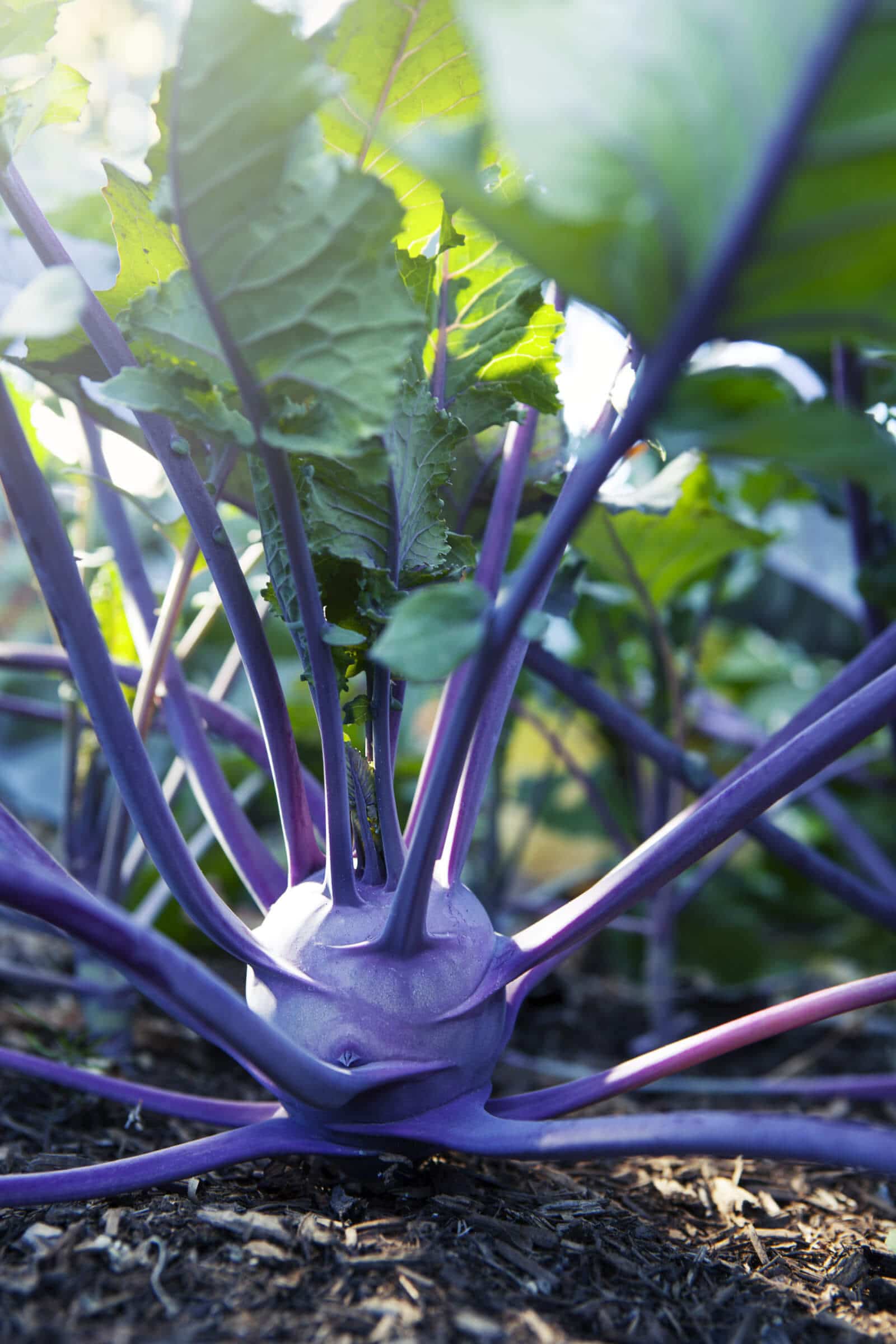
Other “unusual” vegetable leaves you can eat
Still think it’s weird or unsafe to eat broccoli leaves? It’s not—broccoli raab, or rapini, is a fairly common vegetable that’s grown for its asparagus-like shoots and leaves.
Another variety, Spigariello, is a non-heading Italian broccoli grown for its leaves. You may have already eaten it and not known it!
It’s a shame we don’t see broccoli leaves sold in the grocery store—and why don’t we?
Perhaps we’re so accustomed to the usual cast of characters in the leafy greens aisle that we only value broccoli for the crown, in the same way we favor carrot roots over carrot tops. (Which, by the way, are another misunderstood and highly underused green, since you can eat carrot tops too.)
The rest of the brassica family gets no love either. All the leaves on cauliflower, brussels sprouts, kohlrabi, and cabbage plants (the wide outer leaves, not the ones that form a tight head) are usually tossed into the compost pile, but they are, in fact, 100 percent edible and harvestable at any stage of growth.
Using these unconventional parts of the plant (which are not really so unconventional, since they’re just the leaves) is one of the best ways to get more out of your garden by doing less. After all, you don’t have to plant more plants to get more food.

And brassicas are just a handful of the many “unusual” odds and ends of vegetables that are edible (plant scraps, as some people may put it) but most don’t think to eat, including leek tops, squash shoots, tomato leaves, and fava bean leaves.
Considering the amount of water and resources it takes to grow a nutrient-dense (and space-hogging) broccoli plant, it feels like such a waste for commercial farmers to harvest the heads but discard the perfectly good leaves.
And that gives all the more reason to grow your own. (Or make friends with someone who does!)
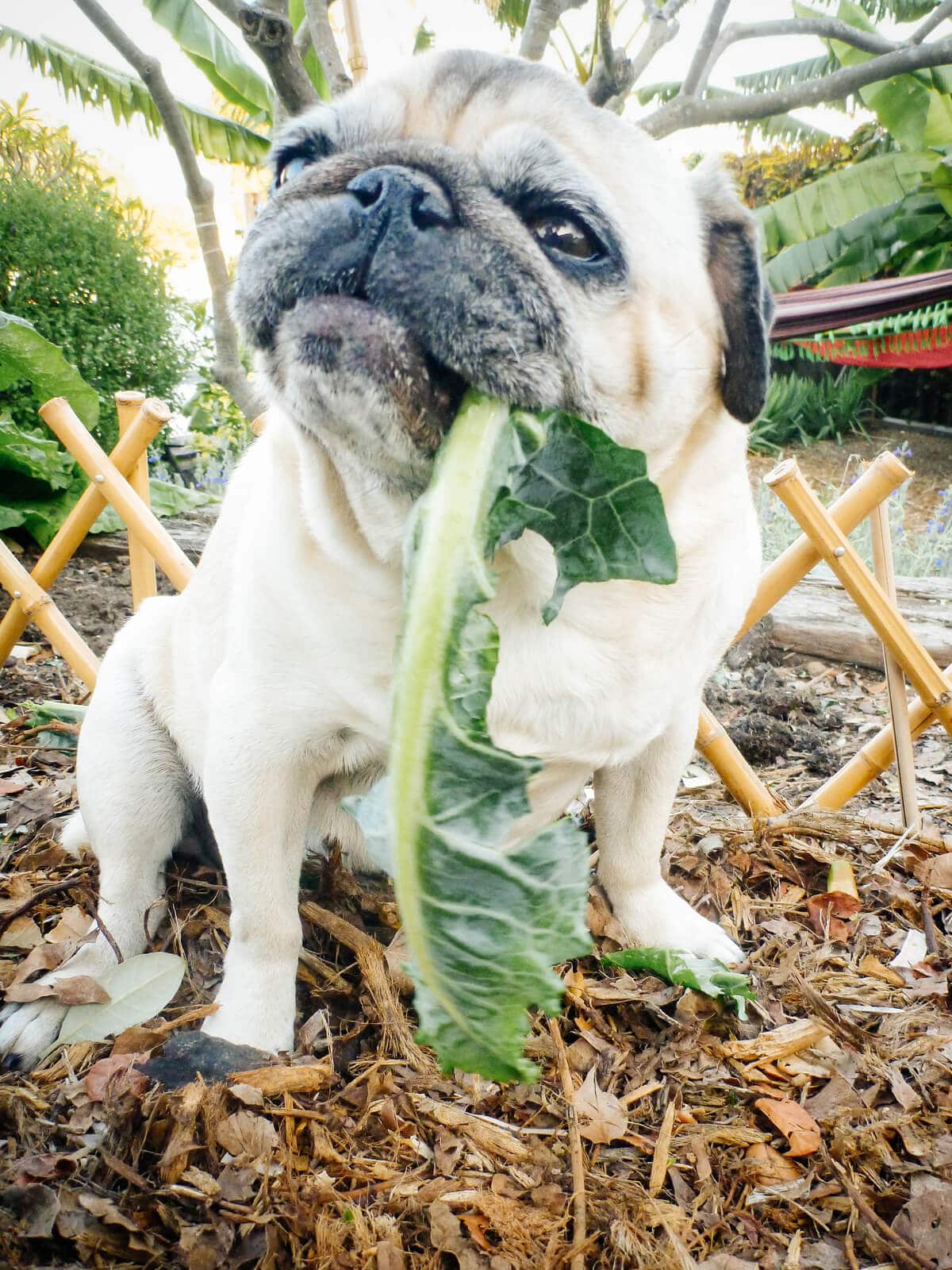
(In loving memory of my omnivorous pug, Bebe, who passed away in June 2017 after a long and adventurous life. Broccoli was a large part of her homemade dog food.)
This post updated from an article that originally appeared on April 29, 2012.


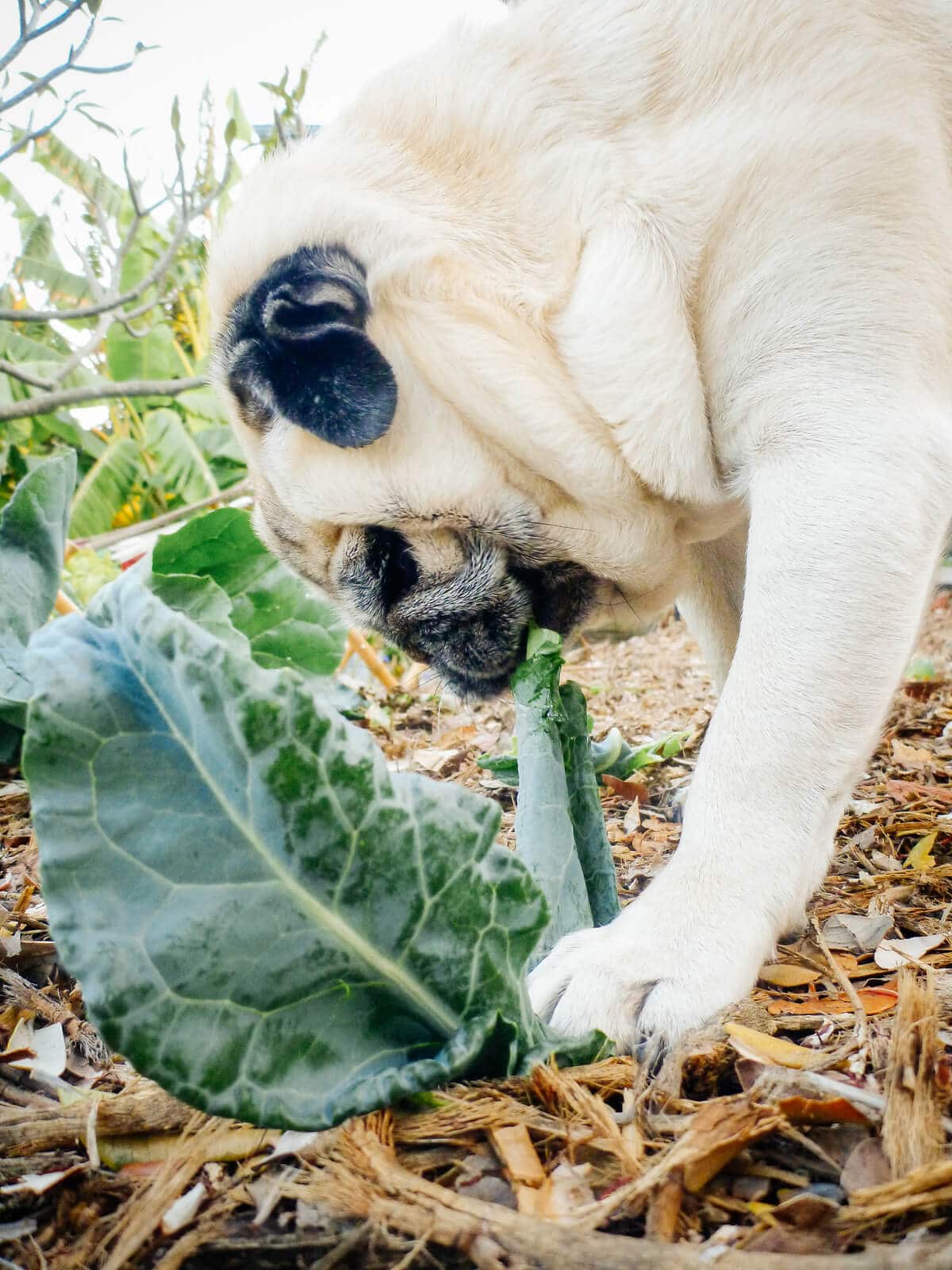













I scattered a seeds of what they called sprout mix. It grew so fast and didn’t have time to eat all of them. There were three plants left and I didn’t realized it was a broccoli when it had florets. I was wondering then if I can eat the broad wide leaves of it. I took the old leaves and throw them but the shoots grwe where the arm was, now I was thinking to eat them but not sure if it’s edible. Upon reading the post of some people, I think I like to add that to my chard and kale salad. Thamks for all the information I gathered today from all the readres.
I have a few broccoli plants growing in my raised
bed. I didn’t know that the leaves were edible. Thanks!
Just used some broccoli leaves in my rice wrap today! Thanks for confirming this!
Betty sorry to tell you Tomato Leaves are Very Toxic and people can get Very sick rom eating them. Can you please take thoe o your list? It’s o true what you wrote about the other veggies. 30+ Yrs Health Researcher
I have been trying to figure out a way to use the broccoli plant more, and was always dissatisfied when I only got one or two heads every year, if I was even lucky enough to get one. I was close to just not planting any broccoli, but i wanted to give it a try. I saw that we always had an abundance of leaves, so I thought we could use the leaves instead. This was a super helpful Article and I was extremely excited to tell my dad we could eat the leaves seeing as I have always loved the broccoli plant from a very young age. I’m now looking to see what else is in are garden that we might be able to use or eat that we usually throw out.
this is the first year that I am growing three Broccoli . They are growing great with lots of leaves. One day I just picked a small piece off one leaf and tasted it, it tasted like mustard green. I told my wife that I think it was edible but was’t sure, She disagreed, Thanks for this sight and your great information, I am going to pick some today and cook them for dinner with the grilled salmon.
You’re welcome, enjoy them! The leaves also make great wraps (in place of tortillas).
Love your adorable Pug! We also grow organic produce and fruit and feed it to our dogs along with their raw meaty bones. Amazing health for all. Give your precious furkid some love from our family.
Aw, thank you!
Look up Kai-Lan or Gai-Lan, this is broccoli cultivated for the leaves.
We are growing lot’s of broccolini (sp?) this season, and was wondering if anyone knows whether their leaves will be just as edible?
What a good dog your companion is, getting their veggies in <3 ^__^
Yes, the leaves of all brassicas (broccolini included) are edible!
Thanks! I can’t believe I didn’t know this and even had to google it! I Lv your pooch! I’m going right out and get a leaf for my dog! I was munching on a leaf the other day and said how sweet and plait-able it was! YES!!! The co-op @ the very least should have Broccoli Leaves as a for-sale item. Geezers!
I just asked a farmer this tonight. She thinks that most farmers aren’t aware that broccoli leaves (among many other plant parts) can be eaten, or they don’t know how to convey to their customers how to eat/cook them!
I’ve never seen broccoli leaves in the store, so you’re very lucky to have that!
Haha what an adorable dog! It’s surprising people don’t know this, I absolutely love sauteing my broccoli leaves or adding them to soups.
I have a stack of broccoli leaves in the fridge right now that I’m using as green wraps. They’re great for that!
They do it’s called kale. Kale, broccoli and Brussels sprouts are all the same play just bred to have certain characteristics (such as leave, buds, shoots) expressed. They all stem from the wild mustard plant.
I live in South Carolina and they sell Broccoli leaves in small bundles at our Bi-Lo…..I put them in my green smoothie! They are wonderful, will have to cook some as well!
I bet you could season these and dehydrate them, like making kale chips? I love kale chips, might have to try broccoli (leaf) chips!
I’m sure you can, though I haven’t tried it myself. Let me know how it turns out!
Thanks for the info. Is this the same for Brocollini leaves?
Yes, this is true for all members of the Brassicaceae family.